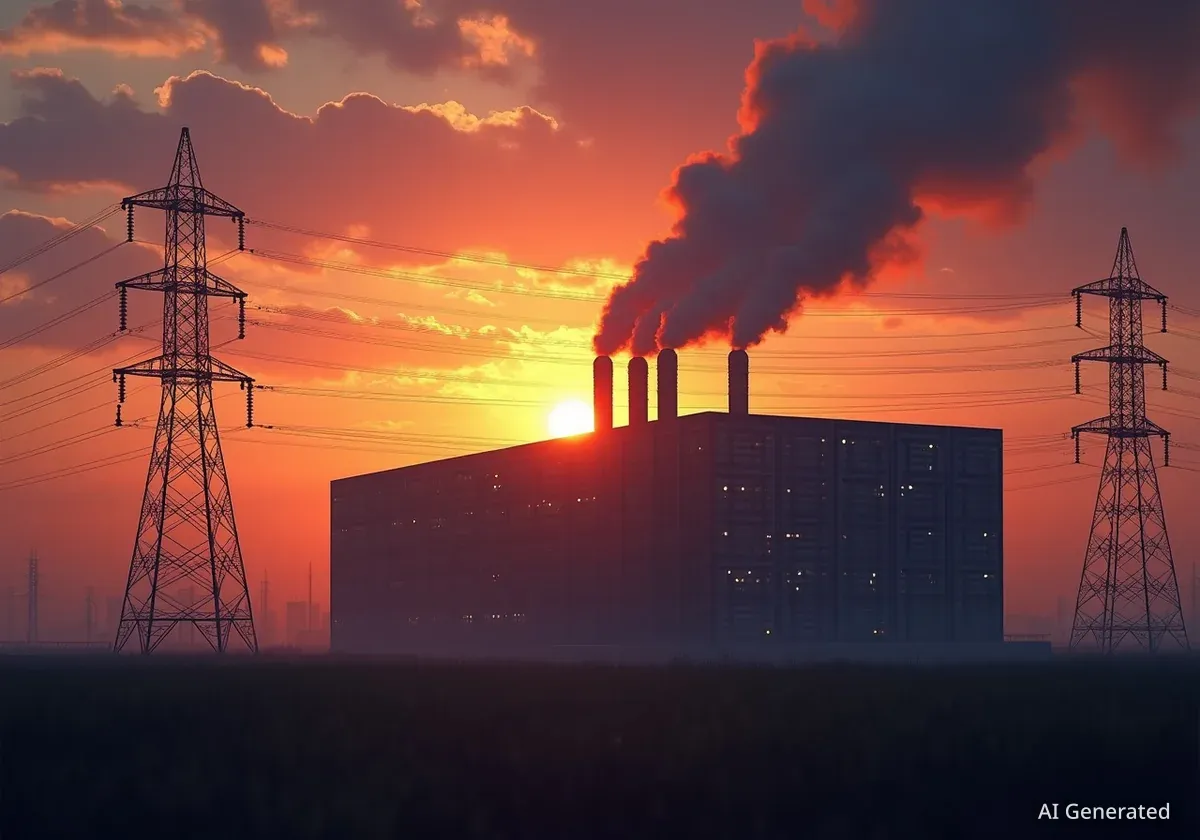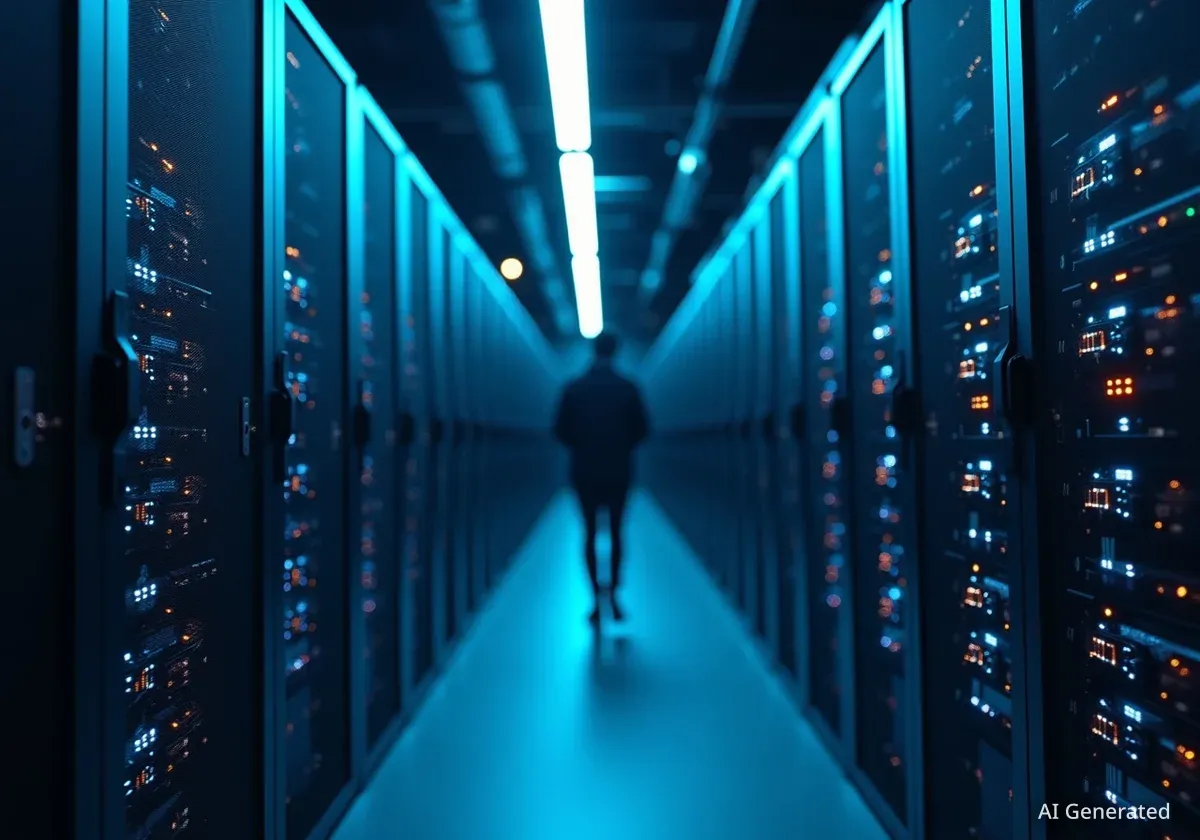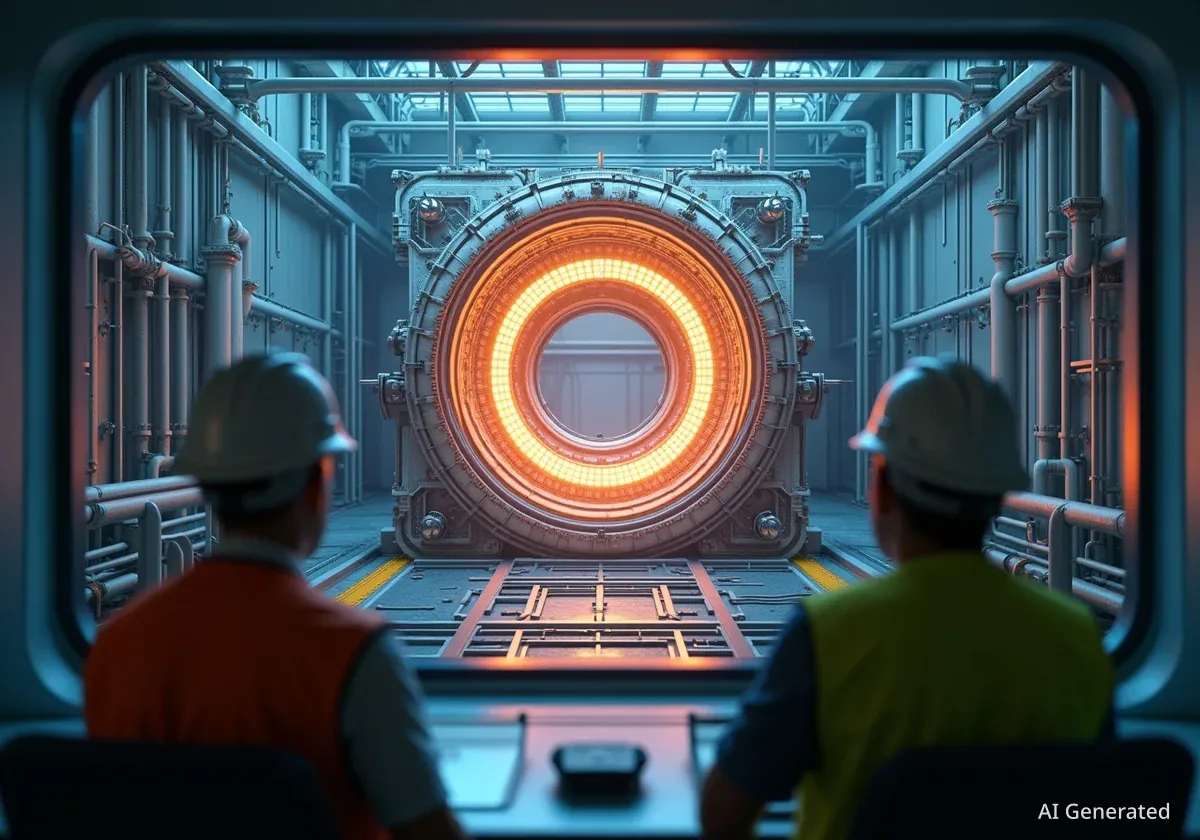The rapid expansion of artificial intelligence is fueling an unprecedented demand for energy, leading to the construction of hundreds of massive data centers across the United States. This boom, particularly visible in states like Texas, is creating a significant challenge for existing power grids and raising questions about the future of energy infrastructure.
As technology companies invest trillions of dollars into AI development, the energy sector is struggling to keep pace with the power requirements of these facilities. This growing gap between AI's energy appetite and the available supply is forcing a renewed reliance on traditional energy sources and could impact electricity prices for consumers.
Key Takeaways
- The artificial intelligence industry's growth is driving a massive increase in energy consumption.
- Hundreds of new data centers in regions like North Texas are placing significant strain on local power grids.
- Officials express confidence in energy capacity, but industry experts warn of potential shortages and rising costs.
- The immense power needs of AI are increasing the demand for fossil fuels, challenging environmental goals.
The Scale of AI's Energy Demand
The artificial intelligence economy is expanding at a rapid pace, backed by trillions of dollars in global investment. Projects like OpenAI's ambitious initiatives symbolize the scale of this technological shift. However, this progress is directly linked to a physical resource: electricity.
Data centers, the backbone of the AI industry, are incredibly power-intensive. They house thousands of specialized computer chips that run 24/7, generating significant heat and requiring constant cooling. According to industry experts, the demand from these facilities is creating what one executive described as a "significant scale issue" for utility providers.
This surge in demand is not a distant forecast; it is happening now. Power companies in regions with high concentrations of data centers are reporting unprecedented requests for energy, forcing them to reconsider their capacity planning for the coming years.
What is a Hyperscale Data Center?
Hyperscale data centers are massive facilities designed to support the robust needs of large technology companies like Google, Amazon, and Microsoft. As AI models become more complex, the demand for these energy-hungry facilities is growing, with each one consuming as much electricity as a small city.
Texas Faces a Critical Energy Test
North Texas has become a major hub for data center development, attracting companies like Oracle and NVIDIA. The state's business-friendly environment and energy resources have made it an ideal location for this technological expansion. However, this rapid growth is highlighting a potential mismatch between energy supply and demand.
Despite concerns from some in the energy sector, Texas Governor Greg Abbott has stated that the state is prepared to meet the challenge. At a recent appearance, he emphasized the state's diverse energy portfolio.
"We have wind, solar, nuclear, which we’re adding even more ... and, of course, natural gas. And so we have low-cost power, abundant power, that is attracting the AI data centers," Governor Abbott said.
Texas is the largest energy producer and consumer in the United States. While its resources are vast, the sheer scale of new demand from AI is testing the limits of its infrastructure. The key question is whether the grid can expand quickly enough to power this new wave of industrial growth without affecting reliability or affordability for residents.
The Unavoidable Role of Fossil Fuels
The push for AI is running into a complex energy reality. While renewable sources like wind and solar are a key part of the energy mix, they face challenges in providing the constant, uninterrupted power that data centers require.
Scaling renewable energy to meet the needs of a single hyperscale data center is a significant hurdle. Nuclear power, the only carbon-free source capable of providing constant baseload power, is also seeing renewed interest. However, nuclear projects are extremely expensive and often take more than a decade to build.
IEA Projects Sustained Fossil Fuel Demand
Research from the International Energy Agency (IEA) suggests that global demand for oil and gas will remain strong for decades. The IEA expects oil to continue as the "largest single fuel" well into the second half of this century, partly driven by the energy needs of emerging technologies like AI.
This leaves a critical gap that is currently being filled by fossil fuels. Natural gas, in particular, has become essential for powering data centers, with demand surging in regions like Appalachia and the Southwest. The inconvenient truth is that for the foreseeable future, fossil fuels remain the only energy source reliable and abundant enough to power the AI revolution at its current pace.
Future Implications for Consumers and Policy
The competition for energy between data centers and the public could have significant consequences. As utility companies work to meet the demands of their large industrial customers, the cost of building new power plants and upgrading the grid will likely be passed on to all consumers.
This raises important questions for policymakers. They must balance the economic benefits of attracting high-tech industries with the need to ensure a stable and affordable energy supply for residents and other businesses. The AI boom is not just a technological story; it is an infrastructure and economic challenge.
As AI continues to integrate into the economy, its energy consumption will remain a central issue. The decisions made today about energy policy and infrastructure investment will determine whether the power grid can support this technological transformation without leaving consumers behind.





